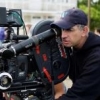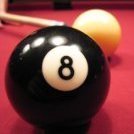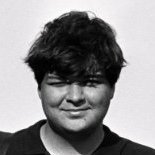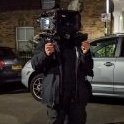-
Posts
1,040 -
Joined
-
Last visited
Profile Information
-
Occupation
Cinematographer
-
Location
Los Angeles
-
My Gear
Steadicam
-
Specialties
specialist in narrative projects, features and series.
Contact Methods
-
Website URL
http://www.brucealangreene.com
Recent Profile Visitors
-

Colour film conversion to BW in post
Bruce Greene replied to Jonathan Martin's topic in Film Stocks & Processing
I do this with still photos shot in color negative film when color turns out to be the wrong approach. The grain will never look the same as B&W film grain, but you can achieve quite good results. The key is to color correct the color version under the de-saturation operation. I would practice in Photoshop, using a still from color negative, and use the “black and white” adjustment layer, and playing with the color sliders in this control panel. You’ll be able to quickly see how the color effects the monochrome version of the image. -
The scenario you describe is the perfect use of a spot meter. just keep in mind that the reading you get from the horizon will be the exposure to reproduce that area of the exposure as middle grey. so if you want your horizon to be bright you’ll need to give it more exposure than the meter reading. If you’re shooting film, that might be two or three stops more exposure than the spot reading for example. I don’t use my spot meter much these days when shooting digital, but I rely on it for shooting film, especially landscapes.
-
This might not apply to you, Leonardo… but might to others. My daughter never went to, or even thought about film school. But today she has made a career as a writer/producer of TV series promos for major networks. She studied English literature and writing in college. And it turns out that the ability to write is very useful in the entertainment business. She learned video editing on the job, with no previous experience. This is just to point out that film school is not the only way forward, and that a creative mindset and skill can be an important asset. Best wishes to all just starting out!
-

Is This Camera Suitable for A Feature?
Bruce Greene replied to DorSinai's topic in General Discussion
I wouldn’t worry about Netflix, since they very very rarely buy small films, and when they do, their camera requirements do not apply. That said… if this is all you’ve got, use it and make your film. Your cinematographer may well be driven nuts trying to shoot with a camera best used for YouTube Vlogs. Keeping focus, constant battery changes, and low quality recording formats will make many challenges! The camera will be cheap, but time delays and difficult post color correction may well make this an expensive choice. Better to find an old RED or Arri Alexa to shoot with I think. -
You’ve been misinformed. For best options in color grading, correctly balance the color exposure in camera by using the 85 filter. Or use daylight balanced film. If you don’t use the filter, when you remove blue from the skin tones, your shadows are going to turn orange due to under exposure of the orange range of colors. Neutralizing the shadows will result in noisy shadows, or you’ll need to crush them to black. To give yourself a fighting chance at a normal color correction when shooting without the filter, increase your exposure by exposing at ISO 250 or 200.
-

Why is there not a low contrast positive stock?
Bruce Greene replied to Karim D. Ghantous's topic in Film Stocks & Processing
This has got me thinking that optical/chemical printing of both motion picture and still films has become a very niche workflow. Maybe it’s time to retire the orange mask? For still photographers it would make scanning negatives with a camera much easier and perhaps lead to increased film sales? Just thinking out loud … -
My last confetti scene was shot in daylight, in the shade of buildings. To make the confetti sparkle I used my biggest lamp, an 18k HMI to backlight (or as close to backlight as I could without the lamp being in frame). To make the confetti sparkle, high contrast if your friend, so a hard light from the side or back looks best. You can see the effect here at about 2:50 into this clip
-
2.39:1… well I’ve shot a bunch of films for the theatrical market in the former USSR. The distributors there strongly prefer scope format, so I’ve shot quite a bit of it. ? Im not sure I really “like it”, just what’s required. Most of my still photography is close to 1.85/1 format. Probably because it’s close to the native format of the camera! I have very very few photographs in portrait mode though…
-
In the film days… I had custom correction lenses made to fit in the Arri and Panavision eye pieces. These days, I just wear my glasses if I must, but since the focus pullers have a better view than I, I rely on them to confirm focus and operate without glasses. Almost always I can tell when a focus error is made from the sound of the focus motor not matching the action. For you, just measure the common eyepieces that you use and have a custom lens or lenses made. Mark the lens with a sharpie on the edge so that you insert it with the correct orientation.
-
Blanks look different than real bullets. But, dummy bullets, that are sometimes used in revolver chambers when seen in the shot, look like real bullets. it’s possible that it was assumed that dummy bullets were loaded in the weapon, making it a “cold gun”… when in reality they were real bullets which should never be present anywhere on a film set. The “reports” that the prop weapons were used for target shooting when not filming are shocking, if true.
-
I still have and use this system :)
-
It will be easiest to sync using 25fps, especially shooting the CRT displays. For some distribution, you’ll need to slow the playback to 24fps, which I’ve done in the past. It is possible that you’ll come across some LED lighting or computer screened that don’t sync well and you’ll need to experiment with shutter angles for the best result.










